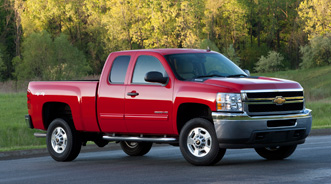LeaseTrader.com Eyes Next Fuel-Cost Tipping Point for Consumer Behavior Changes

By subscribing, you agree to receive communications from Auto Remarketing and our partners in accordance with our Privacy Policy. We may share your information with select partners and sponsors who may contact you about their products and services. You may unsubscribe at any time.
MIAMI –
Arguing that consumers have become dulled to rising gas prices because of the 2008 fuel-cost explosion, LeaseTrader.com said it believes drivers will continue to stick with current habits until the price exceeds $4 per gallon.
LeaseTrader.com explained that it’s using data and models from 2008 that predict when consumer behavior will turn to action, meaning drivers reducing fuel consumption and realizing they should downsize from their lease into a more fuel-conscious vehicle.
The site is projecting an influx of leasing customers looking to transfer out of large vehicles, including the Chevy Silverado and Avalanche, Cadillac Escalade, GMC Sierra, Ford Expedition, Mercedes-Benz GL and BMW X5.
The site asserted that since 2008, the industry has done an exceptional job engineering more fuel-efficient vehicles. However, officials conceded there are still plenty of large vehicles on the roads — many which were culprits just a few years ago.
Furthermore, LeaseTrader.com mentioned some economists are weary that rising gas prices could potentially toss a healing American economy back into recession depending how drastically gas prices spike.
As dealers and consumers readily remember, the site recollected that fuel prices reached a national average of more than $4 per gallon in the summer of 2008. As result, LeaseTrader.com saw a rise in transfers out of an SUV lease as users sought smaller, more fuel-efficient units.
Subscribe to Auto Remarketing to stay informed and stay ahead.
By subscribing, you agree to receive communications from Auto Remarketing and our partners in accordance with our Privacy Policy. We may share your information with select partners and sponsors who may contact you about their products and services. You may unsubscribe at any time.
The company noted that three years ago, users transferred their leases to small businesses and families shopping for short-term contracts with enough room for work projects and growing families.
LeaseTrader.com is expecting similar trends this spring and summer depending on where the price of gas lands.
“The average driver goes through a series of psychological stages when gas prices rise,” explained Sergio Stiberman, chief executive officer and founder of LeaseTrader.com.
“During the uptick, concerns and complaints heat up when we pass certain price benchmarks, but widespread behavior doesn’t actually change until we reach $4 per gallon,” Stiberman concluded.


